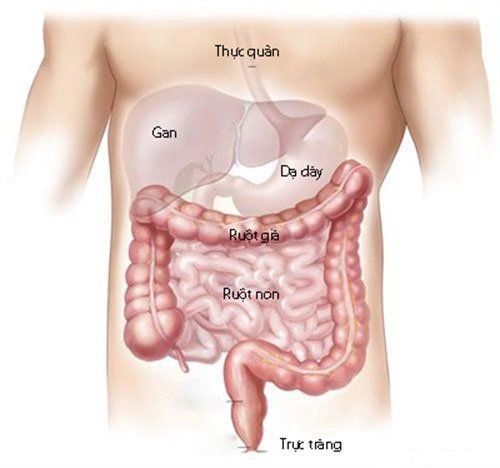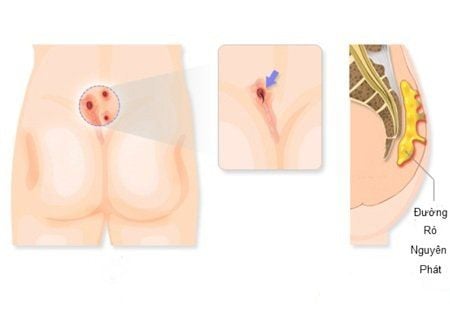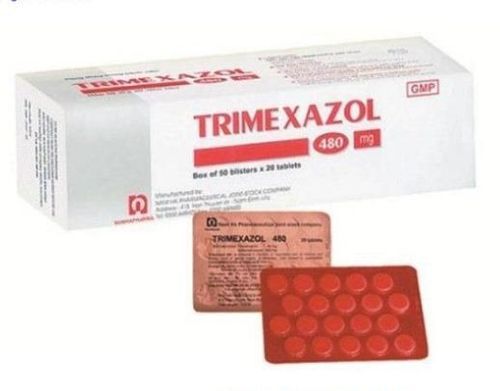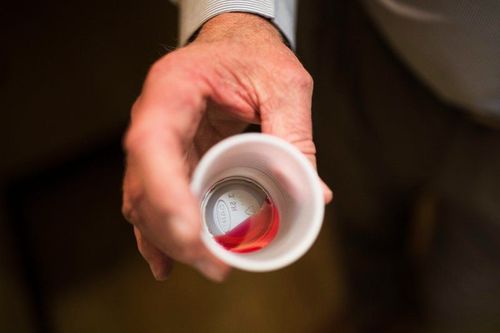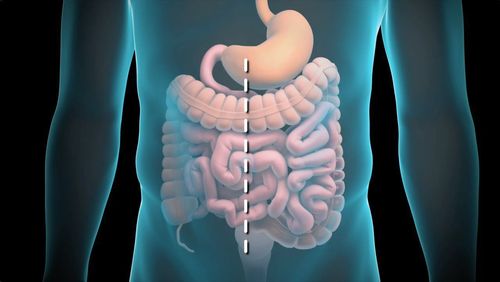This is an automatically translated article.
The article is expertly consulted by Master, Resident Doctor Dang Thi Ngoan - Pediatrician - Neonatologist - Department of Pediatrics - Neonatology - Vinmec Ha Long International Hospital.Blood in the stool is a dangerous symptom that signals an ongoing medical condition. Without early detection, timely diagnosis and proper treatment, the baby's bloody stools can lead to serious health consequences.
1. How does the baby have bloody stools?
Blood in the child's stool is understood as the condition in which the child passes stools that are black, dark red or sometimes bright red blood. In addition, stools are sometimes accompanied by mucus, foam, or an unusual odor.
Bloody stools usually do not appear alone but will be accompanied by other symptoms of the gastrointestinal tract such as abdominal cramps, hot anal swelling, nausea, loss of appetite, fatigue...
Baby has stools Blood is a dangerous sign. Therefore, when taking care of children every day and detecting problems, parents need to quickly take their children to medical facilities for timely diagnosis and treatment, not to prolong because they may face serious problems. serious complications later.
Trắc nghiệm: Nhận biết sớm dấu hiệu chậm phát triển thể chất và trí tuệ ở trẻ
Nếu 6 tuổi không biết đếm số, 7 tuổi vẫn chưa phân biệt được giữa thực tế và tưởng tượng thì có thể bé chậm phát triển thể chất và trí tuệ hơn so với bạn bè cùng lứa. Bạn đã nhận biết được các dấu hiệu bất thường sớm này chưa? Cùng làm nhanh bài trắc nghiệm sau để trang bị thêm kiến thức cho mình nhé!
The following content is prepared under supervision of Thạc sĩ, Bác sĩ y khoa, Ma Văn Thấm , Nhi , Phòng khám Đa khoa Quốc tế Vinmec Dương Đông(Phú Quốc)
2. The cause of the child's blood in the stool
2.1 Dysentery
Dysentery (or simply called dysentery) is one of the common causes in the gastrointestinal tract causing bloody stools. This is an intestinal disease that is attacked by viruses, bacteria, parasites and protozoa, the most common of which are the amoeba Entamoeba histolytica and Shigella bacillus.
In addition to liquid stools accompanied by blood, children with dysentery also have other symptoms such as frequent bowel movements (usually 4 or more times), stools with mucus, air bubbles, and babies often cry. when defecating due to anal pain...
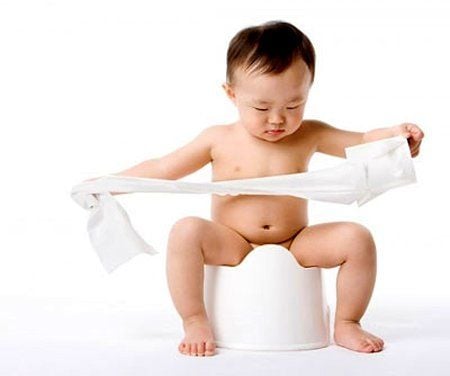
2.2 Colon-rectum polyps
Colon - rectal polyps is a common disease in adults, but that does not mean that children do not have polyps. Risk factors for polyps in children are obesity, a high-fat, low-fiber diet and a habit of eating red meat.
The majority of colorectal polyps are "silent", with no symptoms. If the polyps increase in size, the baby may have bloody stools or bleeding from the rectum.
The most serious complication of colorectal polyps in children is an increased risk of bowel obstruction if not well controlled. Therefore, if the child notices blood in the stool, parents need to take the initiative to bring the child to the hospital for timely detection of the disease.
2.3 Vitamin K deficiency
Vitamin K is part of the blood clotting system in the body, a deficiency can lead to a number of bleeding disorders and possibly bloody stools. Most vitamin K deficiency occurs in children under 6 months of age because the main source of nutrition is breast milk. Therefore, if the mother's diet is not enough, the baby is at risk of vitamin K deficiency and may experience blood in the stool.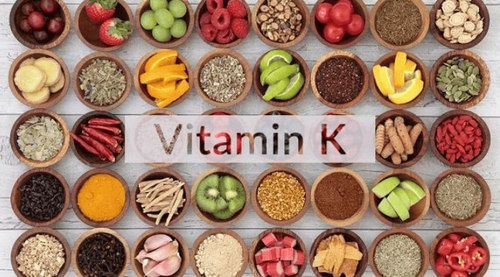
2.4 Acute intussusception
Intussusception is an emergency disease that often occurs in children under the age of 2. The disease mechanism appears because a segment of intestine is turned upside down and enters the inner space of the adjacent intestine.
Symptoms of the disease include severe abdominal pain, intense crying. The child may then vomit and have bloody stools with thick mucus. If not treated in time, intussusception will cause many serious complications to the baby's health.
2.5 Crohn's disease
Crohn's disease is an inherited inflammatory bowel disease. The disease occurs causing the intestinal tissues to become severely inflamed, unable to absorb nutrients, causing diarrhea and severe malnutrition if not treated early. Over time, the inflammatory bowel tissues are necrotic, leading to bleeding and the child's appearance of blood in the stool.
2.5 Typhoid
Typhoid is an infection of the digestive system caused by the bacteria Salmonella Typhi. This bacteria has the ability to live in the intestinal tract and invade and spread throughout the body. Symptoms of the disease include high fever (usually more than 40 degrees Celsius), appearance of a generalized rash, diarrhea (with bloody stools), abnormal sweating...
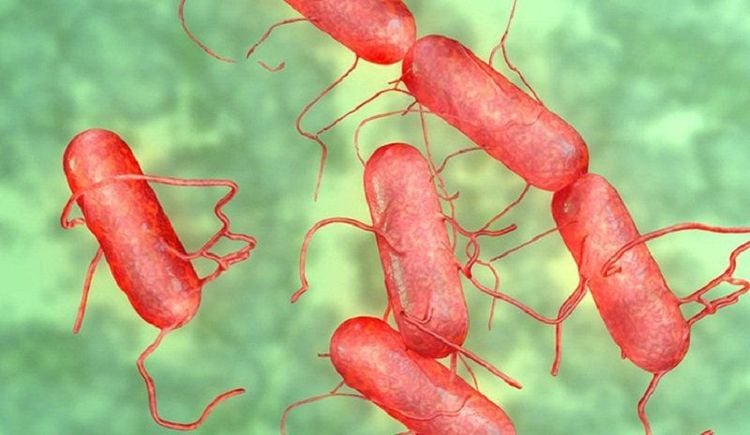
3. Is it dangerous for children to have blood in their stools?
Children with blood in the stool mostly signal a dangerous medical condition of the baby. The causes of this condition all have the potential to cause serious complications. Some other causes such as vitamin K deficiency, dysentery... if not handled early and the condition lasts for a long time, children will suffer from malnutrition, anemia, electrolyte imbalance, growth retardation...
Due Then, when the child's parents discover that the child has bloody stools, they need to quickly take the child to the hospital for examination and treatment. Absolutely do not self-treat at home, both to avoid complications of the disease and also complications due to incorrect drug use.
4. How to treat a baby with bloody stools?
Most cases of children passing blood with mucus must be treated at medical facilities. The most important requirement is quickly and promptly to avoid complications that make the disease worse. The doctor is the one to judge, give tests to find the cause as well as prescribe drugs to treat bloody stools in children.
Some common treatment methods:
Surgery if the cause is intussusception, large polyps causing intestinal obstruction... Antibiotics in case of infection. Treatment of gastrointestinal symptoms such as pain relievers (Paracetamol), antiemetics (Domperidon, Metoclopramide...), antidiarrheal drugs (Loperamide) or probiotic supplements (Probio, Biolac... ) Supplement electrolytes and water with cases of prolonged diarrhea causing dehydration.

5. Taking care of children with blood in the stool at home
Measures to take care of the baby with bloody stools at home:
Let the child drink enough water every day (about 2 liters). In addition to filtered water, it is possible to add juice, milk, rice water, diluted salt water ... to both rehydrate and compensate for the lack of electrolytes. Add foods rich in vitamin K (celery, cauliflower, cabbage, radish, spinach...) to limit blood clotting disorders caused by lack of this vitamin. Give your child blood-tonic foods to replenish blood loss due to bowel movements... Cook foods, prepare them in liquid and soft form to reduce pressure on the digestive system. Give your child complete rest during treatment. Limit foods containing dairy, high in fat and fiber... for children with Crohn's disease. Eat small meals several times a day to reduce pressure on the digestive system. Do not give children hot spicy foods, use stimulants such as coffee, tea, ...
Please dial HOTLINE for more information or register for an appointment HERE. Download MyVinmec app to make appointments faster and to manage your bookings easily.






